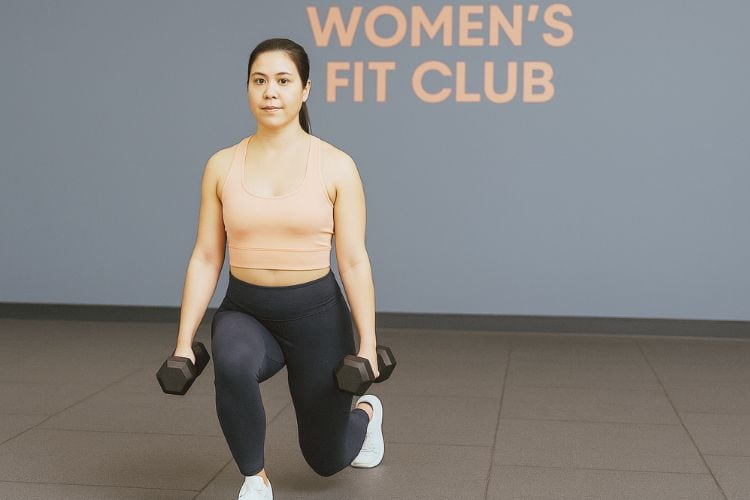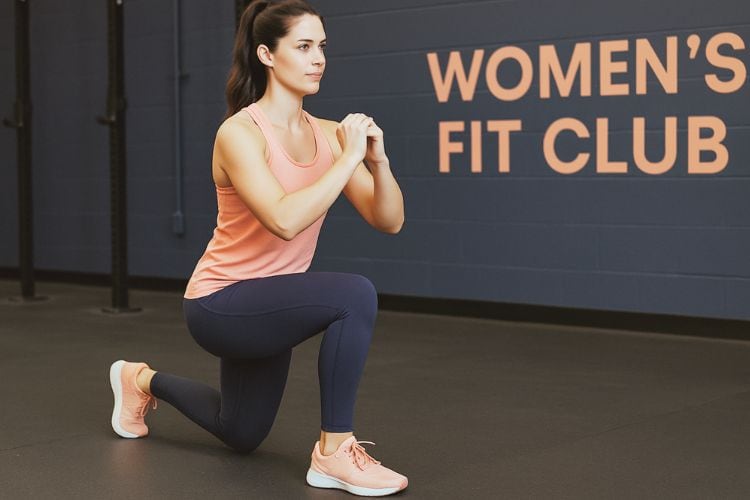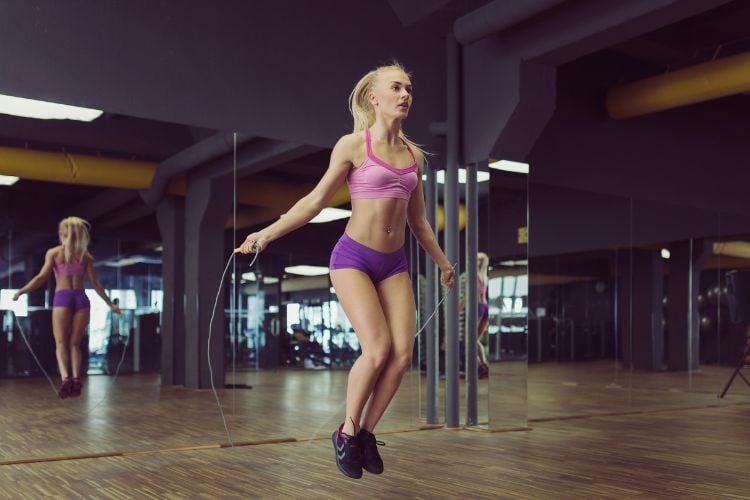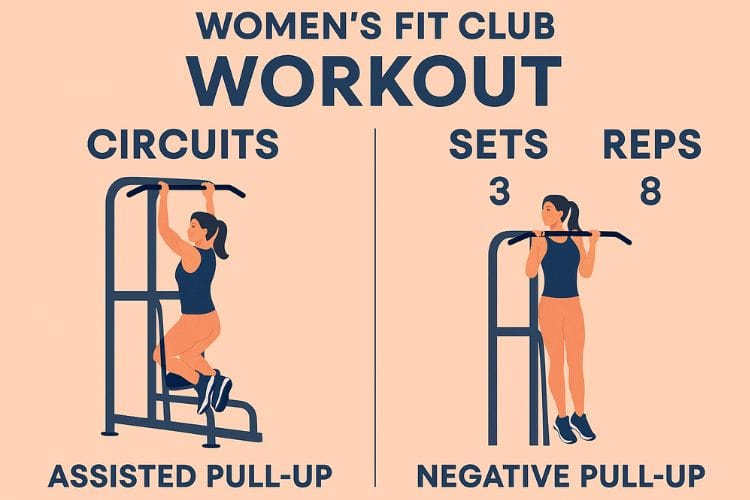Sign up for workout ideas, training advice, reviews of the latest gear and more.






If you’re looking to build serious upper-body strength without equipment, the pull-up is one of the best exercises you can master. It engages your back, shoulders, arms, and core all at once — making it a true full-body challenge. But not everyone can perform multiple pull-ups right away. That’s where this 30-minute bodyweight pull-up workout comes in — a structured routine designed to help you develop strength, endurance, and form whether you’re a beginner or advanced athlete.
In this guide, we’ll break down the benefits, warm-up routine, circuit plan, variations, and cool-down, all optimized for maximum efficiency and minimal equipment. Let’s dive in!
The pull-up is more than just a back exercise — it’s a complete upper-body powerhouse move that targets:
Beyond strength, pull-ups improve functional fitness, posture, and coordination — translating directly into better performance in sports, weightlifting, and even daily activities.

This workout blends pull-up progressions, core activation, and accessory bodyweight exercises to build the muscles and endurance needed to dominate pull-ups.
The 30 minutes are divided into 4 parts:
Before diving into pull-ups, you need to warm up your shoulders, back, and core to prevent injury and optimize performance. Spend 5 minutes performing these moves:
Loosen up the shoulders by performing large forward and backward circles.
Hang from the bar and pull your shoulder blades down and together without bending your elbows. This activates your lats and primes your back.
From a plank position, tap each shoulder with the opposite hand, engaging your core and stabilizing muscles.
Hang from the bar with arms fully extended and engage your grip. This increases shoulder mobility and grip endurance.
Move between arching and rounding your spine to improve flexibility in your back.
This circuit focuses on improving your pull-up strength and control. Perform these exercises as a circuit, resting 60 seconds between each round. Complete 3 rounds total.
Use a resistance band for support or perform jump-assisted pull-ups to build strength through the full range of motion.
Start at the top position (chin over bar) and slowly lower yourself down. This eccentric phase builds strength fast.
Hold your chin above the bar, engaging your lats and arms. This improves endurance and stability.
If you have a low bar or sturdy surface, lie underneath and pull your chest up toward the bar. Targets the same muscles as pull-ups at a slightly easier angle.
Grip the bar and hang to enhance grip and shoulder stability.
These exercises target supporting muscle groups to make your pull-ups stronger and more stable. Perform each movement back-to-back with 45 seconds rest between rounds. Complete 3 rounds total.
From forearm plank, press up onto your hands, alternating the leading arm. Strengthens your shoulders, triceps, and core.
Lie face-down, lift your chest and legs, and mimic a pull-down motion. Focus on squeezing your back and shoulder blades together.
With hips elevated, perform push-ups emphasizing your shoulders and upper back.
Lie face down with arms extended overhead. Raise your chest slightly and sweep your arms to your sides in a snow-angel motion. Targets rear delts and traps.
Engage your core by holding your legs and shoulders off the floor while keeping your lower back pressed down. Essential for body control in pull-ups.
Proper recovery keeps your muscles flexible and prevents soreness. Spend 5 minutes on these stretches:
Hold one arm overhead and gently pull it to the opposite side to stretch your lats.
Pull one arm across your chest to loosen your shoulder joint.
Interlace your fingers behind your back and lift slightly to open your chest and shoulders.
Sit with legs extended and fold forward to stretch your hamstrings and lower back.
Relax your spine and shoulders while focusing on deep breathing.
Improvement in pull-ups comes from consistency and progressive overload. Even with bodyweight only, you can continue to challenge your muscles by adjusting reps, tempo, or form.
Here’s how:
Slow down each rep — take 3-5 seconds to lower yourself during negatives.
If you can easily complete 3 rounds, add an extra round or increase reps slightly each week.
Changing your grip challenges your muscles differently, improving versatility and grip strength.
A strong core keeps your body stable during pull-ups. Add exercises like leg raises, planks, or V-ups 2–3 times a week.
Keep a workout journal. Tracking progress helps you see improvement and stay motivated.
Even experienced athletes make small mistakes that hinder progress or lead to injury. Be mindful of these:
Focus on strict form before introducing any swinging or kipping motion. Momentum cheats your muscles of proper tension.
Keep your shoulders pulled down and back to engage your lats correctly.
Go all the way down to a full hang and pull until your chin clears the bar for maximum muscle activation.
Allowing your legs to swing or your torso to arch weakens stability. Keep your abs tight and body straight.
Muscles grow during rest — not during training. Aim for at least one full day of rest between pull-up workouts.
If you’re new to pull-ups, start with easier progressions until you build strength.
Use a resistance band to support part of your weight. As you get stronger, use lighter bands.
Use a small jump to get your chin above the bar, then control your descent slowly.
Focus only on the lowering phase — it’s one of the fastest ways to build strength.
Place your feet on a chair for partial support, allowing you to work your back without overstraining.
Once you can perform multiple strict pull-ups, challenge yourself with advanced variations that increase intensity and build new strength patterns.
Targets the outer lats for a broader back.
Shift your body toward one arm during each rep to increase unilateral strength.
Hold your legs straight in front of you to engage your core while pulling.
Move side-to-side at the top of each pull-up to hit multiple muscle angles.
Lower yourself slowly using one arm to develop elite-level strength.
Performing pull-ups and related bodyweight movements provides numerous physical and mental benefits:
Here’s how you can incorporate this workout into your weekly training plan:
| Day | Workout Focus |
|---|---|
| Monday | 30-Minute Bodyweight Pull-Up Workout |
| Tuesday | Lower-Body Bodyweight Circuit |
| Wednesday | Rest or Yoga |
| Thursday | 30-Minute Pull-Up & Core Routine |
| Friday | HIIT Cardio or Full-Body Circuit |
| Saturday | Active Recovery (walk, stretch) |
| Sunday | Rest |
This balance ensures recovery while maintaining consistent upper-body strength development.
Your results depend not only on your training but also on how you eat and recover.
Aim for 0.8–1 gram of protein per pound of body weight to support muscle repair.
Consume a balanced meal or shake with protein and complex carbs within 60 minutes of training.
Get at least 7–9 hours of quality sleep — essential for recovery and strength growth.
Incorporate yoga or mobility drills to maintain shoulder health.
Light cardio or swimming can promote blood flow and reduce muscle soreness.
The 30-minute bodyweight pull-up workout is one of the most effective ways to build a stronger, leaner, and more defined upper body without equipment. Whether you’re mastering your first pull-up or working toward advanced variations, this program will challenge your muscles, strengthen your core, and boost your confidence.
Remember, progress takes patience — focus on form, stay consistent, and celebrate every rep. Over time, your effort will pay off with visible strength gains and a sculpted upper body.
Stay up to date on the latest women’s health, fitness and lifestyle trends and tips.